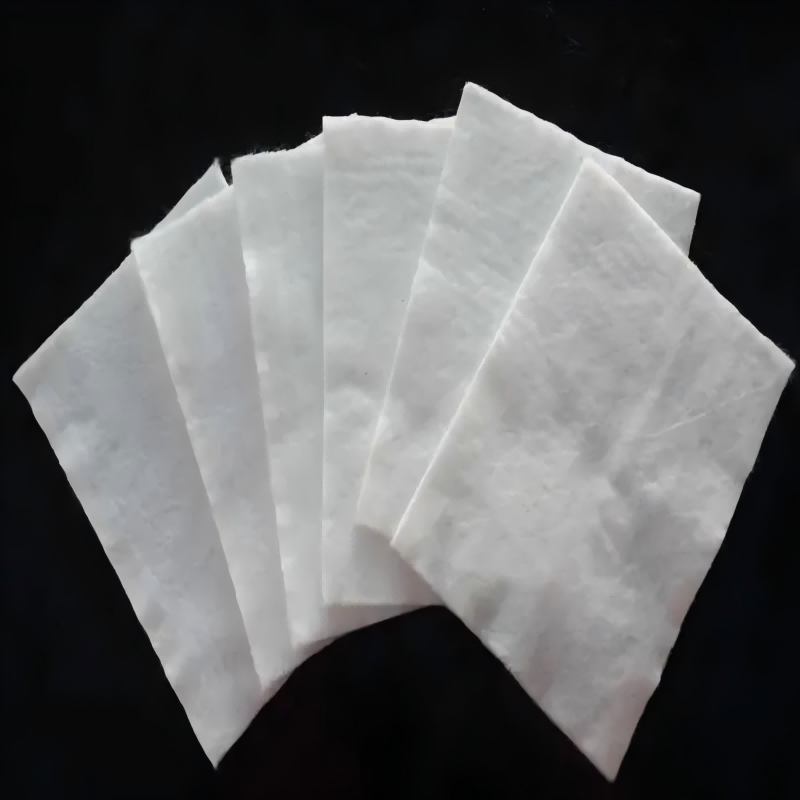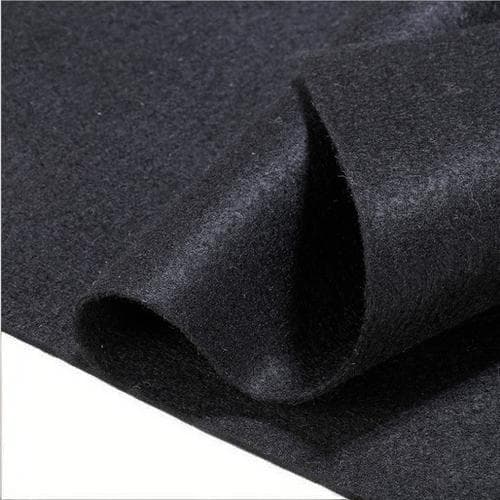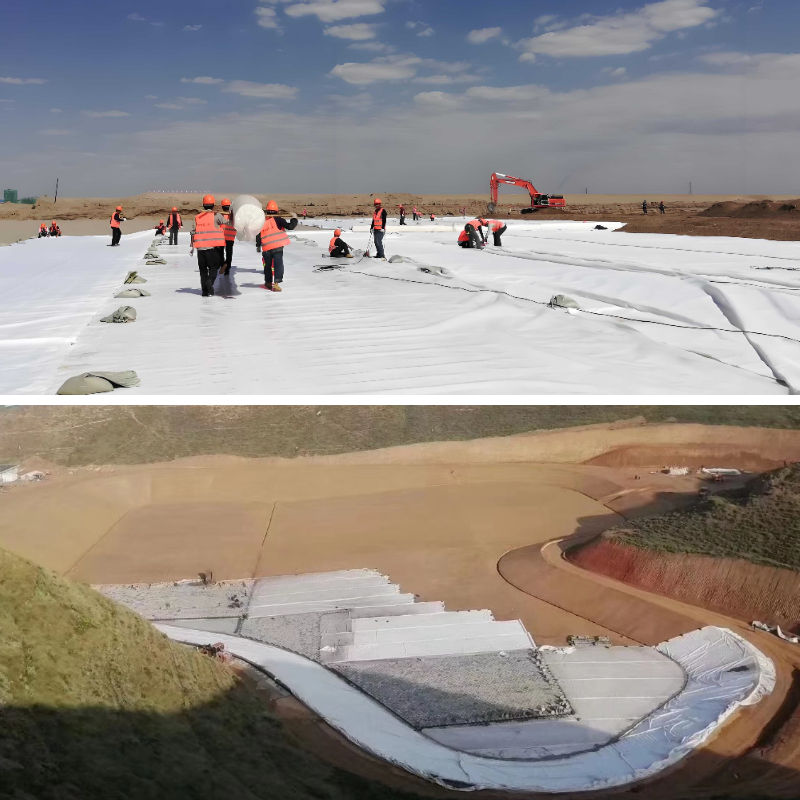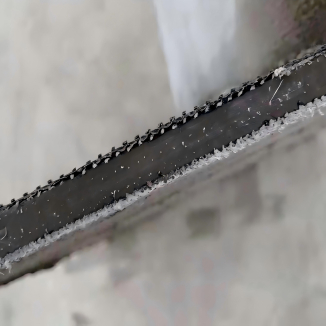Geotextile 400g
1. Convenient construction: Lightweight, flexible, easy to transport and lay, can greatly shorten the construction period and reduce construction difficulty.
2. Low cost: The unit area cost of geotextile is low, and its service life is long, which can reduce the maintenance and replacement costs of the project.
3. Excellent environmental performance: Most geotextiles are made of recyclable polymer materials, which are environmentally friendly and meet the environmental requirements of modern engineering.
4. Stable performance: It can maintain good mechanical and chemical stability under different environmental conditions such as temperature and humidity, ensuring the long-term safety of the project.
Product Introduction:
Geotextile 400g is a permeable geosynthetic material made from synthetic fibers such as polyester (PET) and polypropylene (PP) through needle punching, weaving, or thermal bonding processes. Its finished product is in the form of cloth, with a width of usually 4-6 meters, a length of up to 50-100 meters, and a maximum width of 9 meters. According to different processes, geotextiles are divided into woven geotextiles (woven process, high strength, deformation resistance) and non-woven geotextiles (needle punched or heat bonded, strong permeability, low cost). They can also be integrated with multiple functions such as anti-seepage and drainage through composite forms (such as fabric film composite).
characteristic
1. High strength and durability
Plastic fiber material enables geotextiles to maintain stable strength and elongation in both dry and wet conditions, with tensile strength up to 2-3 times that of short fiber geotextiles (long fiber geotextiles), suitable for high stress scenarios.
Strong corrosion resistance, not easily aged after long-term use in acidic or humid environments, and excellent resistance to microorganisms and insect infestations.
2. Permeability and Filtration
The gaps between fibers form a three-dimensional network structure, allowing water flow to pass through but blocking soil particles, fine sand, etc., achieving a filtering effect of "permeable but impermeable to soil".
3. Construction convenience
The material is gentle, easy to transport, cut, and lay, and can be manually operated to reduce construction costs.
Supports multiple connection methods: Stitching connection (anti UV suture) is used in humid weather, and hot air welding or natural overlapping can be used in dry weather.
4. Environmental Protection and Economy
Low cost and recyclable (such as polypropylene material), some new materials (such as PLA polylactic acid geotextile) can even be degraded, reducing engineering pollution.
Long term maintenance costs are low, and the lifespan can reach several decades.
5. Multi functional adaptability
By adjusting the fiber type (short fiber/long fiber), process (needle punching/weaving), or composite form (cloth+film), it is possible to customize to meet the needs of isolation, reinforcement, drainage, and anti-seepage.
Product Parameters:
project | metric | ||||||||||
Nominal strength/(kN/m) | |||||||||||
6 | 9 | 12 | 18 | 24 | 30 | 36 | 48 | 54 | |||
1 | Longitudinal and transverse tensile strength / (kN/m) ≥ | 6 | 9 | 12 | 18 | 24 | 30 | 36 | 48 | 54 | |
2 | Maximum elongation at maximum load in longitudinal and transverse directions/% | 30~80 | |||||||||
3 | CBR top penetration strength /kN ≥ | 0.9 | 1.6 | 1.9 | 2.9 | 3.9 | 5.3 | 6.4 | 7.9 | 8.5 | |
4 | Longitudinal and transverse tearing strength /kN | 0.15 | 0.22 | 0.29 | 0.43 | 0.57 | 0.71 | 0.83 | 1.1 | 1.25 | |
5 | Equivalent aperture O.90(O95)/mm | 0.05~0.30 | |||||||||
6 | Vertical permeability coefficient/(cm/s) | K× (10-¹~10-), where K=1.0~9.9 | |||||||||
7 | Width deviation rate /% ≥ | -0.5 | |||||||||
8 | Unit area mass deviation rate /% ≥ | -5 | |||||||||
9 | Thickness deviation rate /% ≥ | -10 | |||||||||
10 | Thickness coefficient of variation (CV)/% ≤ | 10 | |||||||||
11 | Dynamic perforation | Puncture hole diameter/mm ≤ | 37 | 33 | 27 | 20 | 17 | 14 | 11 | 9 | 7 |
12 | Longitudinal and transverse fracture strength (grab method)/kN ≥ | 0.3 | 0.5 | 0.7 | 1.1 | 1.4 | 1.9 | 2.4 | 3 | 3.5 | |
13 | Ultraviolet resistance (Xenon arc lamp method) | Longitudinal and transverse strength retention rate% ≥ | 70 | ||||||||
14 | Ultraviolet resistance (fluorescence UV lamp method) | Longitudinal and transverse strength retention rate% ≥ | 80 | ||||||||
Product Applications:
1. Water conservancy engineering: Geotextiles can be used for anti-seepage, filtration, drainage, etc. in the construction of water conservancy facilities such as dams, channels, and reservoirs. For example, in the anti-seepage treatment of dams, the use of composite geotextiles can effectively prevent water leakage; In the slope protection of channels, geotextiles can play a filtering and drainage role to prevent channel slopes from being washed away by water flow.
2. Transportation engineering: In transportation construction such as highways, railways, airport runways, geotextiles are mainly used for roadbed reinforcement, pavement drainage, isolation, etc. Laying geotextile in highway subgrade can enhance the bearing capacity of the subgrade, reduce settlement and deformation of the subgrade; Laying geotextile between the base and surface layers of the road can serve as a barrier to prevent base materials from entering the surface layer.
3. Municipal engineering: Geotextiles are widely used in the construction of municipal facilities such as urban roads, drainage pipelines, and landfills. For example, in landfills, geotextiles can be used as impermeable and filtering layers to prevent soil and groundwater contamination by leachate from garbage; Laying geotextile around drainage pipes can improve drainage efficiency and prevent pipe blockage.
4. Construction engineering: Geotextiles also have certain applications in foundation treatment, roof waterproofing, and other aspects of building construction. In foundation treatment, using geotextile reinforcement can improve the stability of the foundation; In roof waterproofing engineering, geotextile can be used as the base layer of waterproofing membrane to enhance the strength and durability of the waterproof layer.
5. Agricultural engineering: In agricultural projects such as irrigation and soil and water conservation, geotextiles can be used for channel seepage prevention, slope protection, etc. For example, laying geotextiles in farmland irrigation channels can reduce water waste and improve irrigation efficiency; In areas with severe soil erosion, using geotextiles for slope protection can effectively prevent soil erosion.
Geotextiles, with their unique properties and advantages, have been widely used in various engineering constructions, providing reliable guarantees for the quality and safety of projects. With the continuous development of technology, the performance of geotextiles will continue to improve, and their application fields will further expand.












